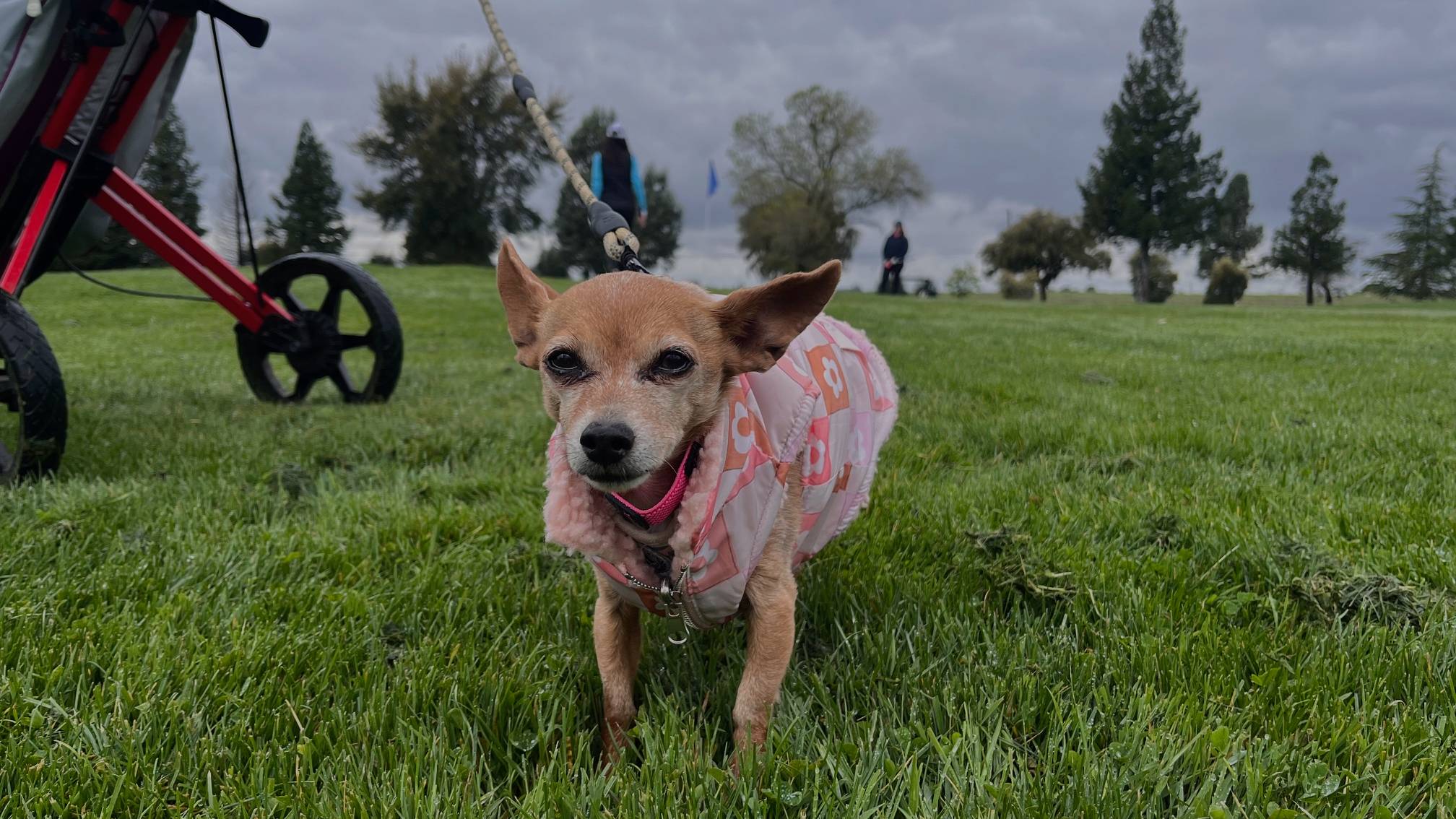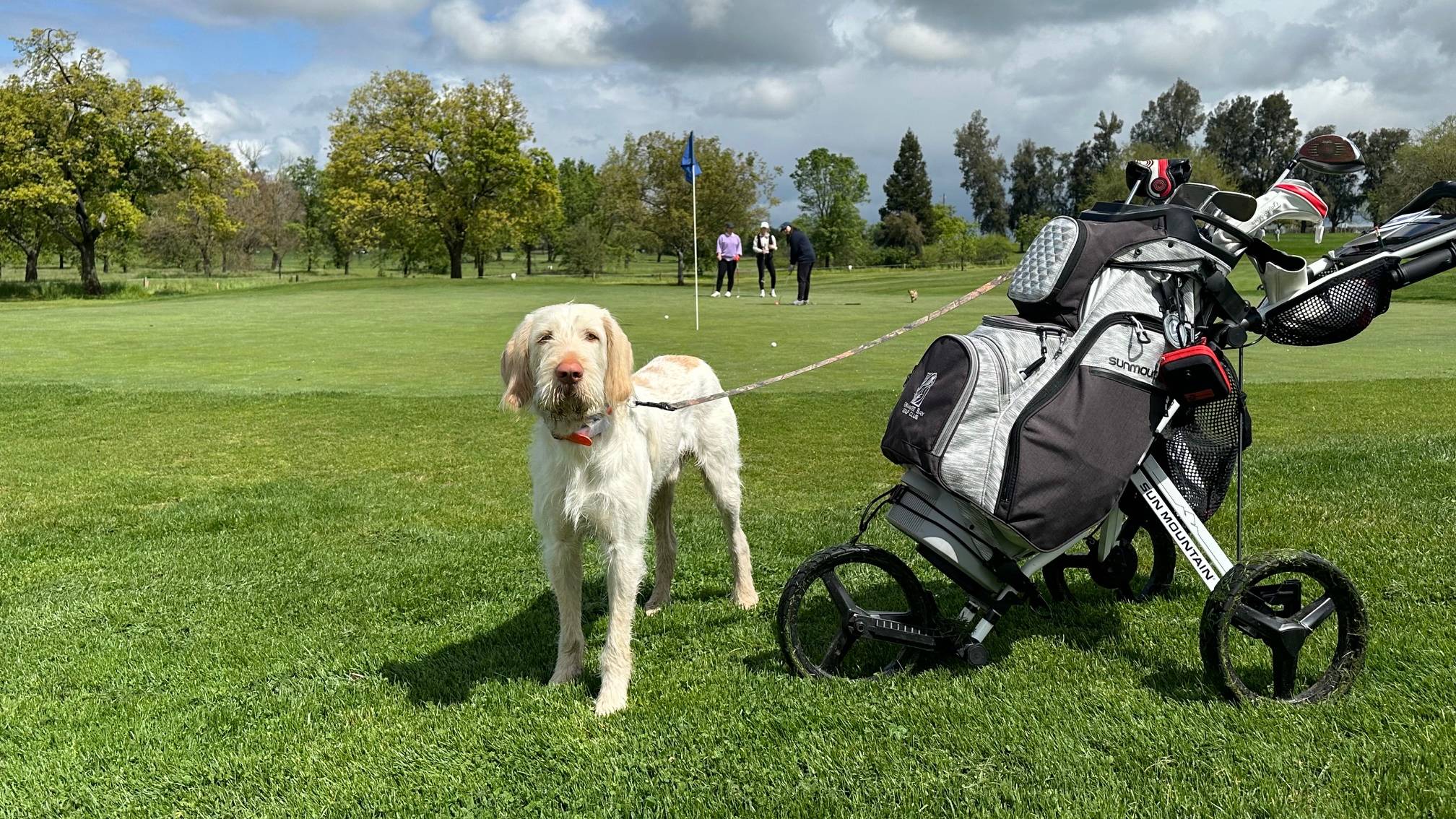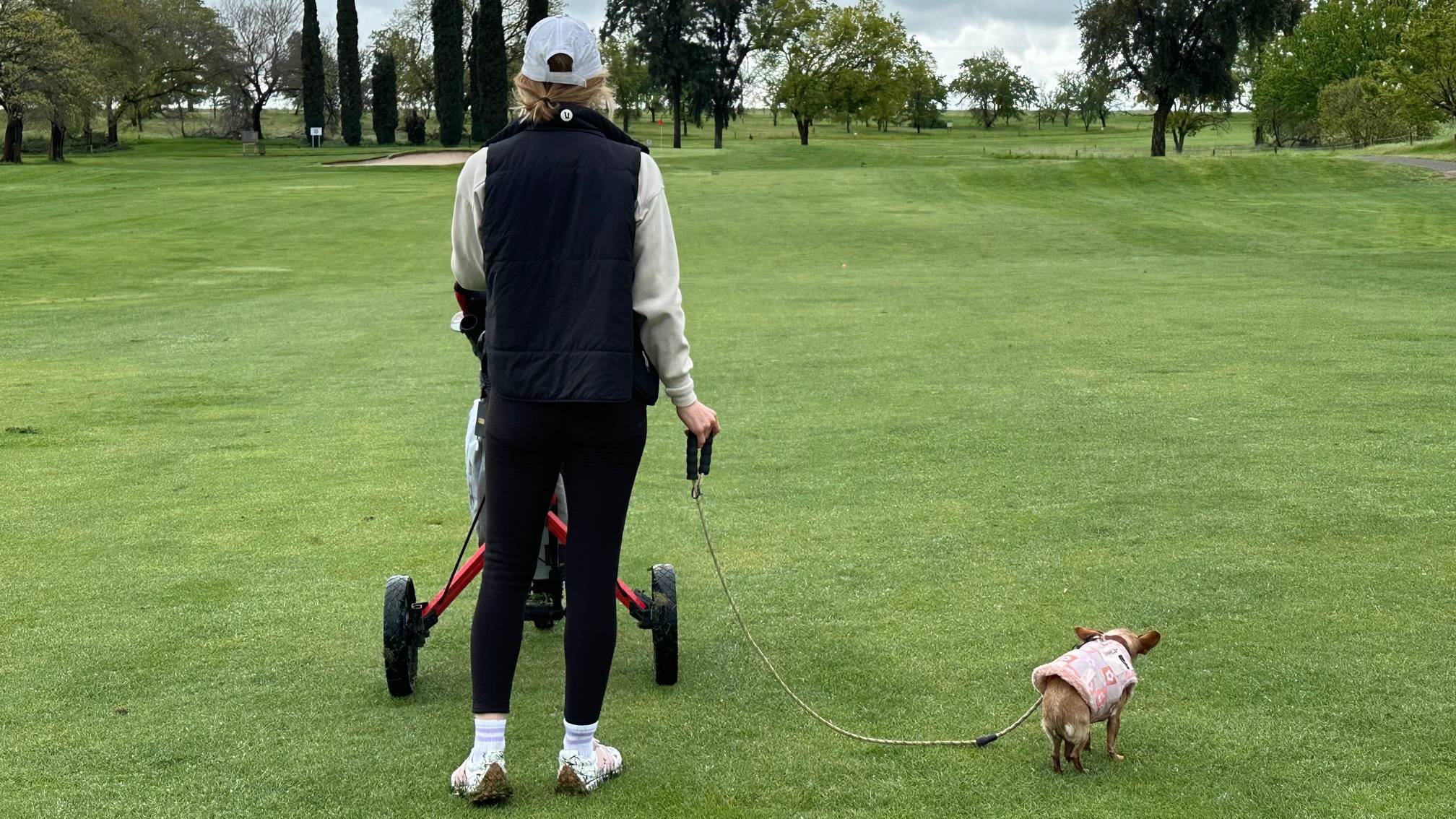Should Dogs Be Allowed On Golf Courses? It's A Debate That Divides Opinion...
We consider the golf-dog-friendly debate, and 5 tips to ensure you and your dog have a relaxing round


Here in dog-friendly California, it’s common to find boutique hotels that offer dogs a memory foam bed and water bowl upon check in, restaurants that serve puppy-safe burgers on silver platers, and wineries that offer dog treats with your tasting.
And it turns out - golf courses allow dogs to join tee times, too.
As the former editor of Dogster magazine (now defunct), the longest-running dog publication in the United States, I’ve seen companies and cities evolve to accommodate Americans who want to bring our pups to work, travel, shop, exercise, and dine out with them.
But golfing with dogs has always been a polarizing topic: the opponents arguing that dogs are destructive to the course and distracting to players; the proponents claiming that some golfing partners behave worse during a round than our furry best friends.

It got me thinking: With this overall push, especially among younger generations, to enhance that human-dog bond in every aspect of living, are the most dog-friendly U.S. cities also trending toward golf-dog friendly?
Should Dogs Be Allowed On Golf Courses?
That’s the big, decades-long, dog-lover/golf-lover debate. While golfing with dogs is much more widely accepted in the U.K., U.S. courses have a reputation for their no-canine policies.
But, when I looked into the top five cities that are regularly listed as the most dog-friendly in the country (Portland, Oregon; San Diego, California; Denver, Colorado; Austin, Texas; and Asheville, North Carolina), dogs were welcome on either the city-owned municipal golf courses or multiple surrounding public courses.
Subscribe to the Golf Monthly newsletter to stay up to date with all the latest tour news, equipment news, reviews, head-to-heads and buyer’s guides from our team of experienced experts.
The Southeast (specifically Florida, Virginia and South Carolina) is welcoming, overall, to golf dogs, says Jon Cavalier, a Pennsylvania-based travel golf photographer, who created the LinksGems brand on social media. Cavalier and his Chocolate Labrador Retriever Gracie have golfed together for 10 years, playing more than 500 rounds in at least 15 states.

Lauren with her dog Lucy
Cavalier himself has played all around the U.K. and the U.S. and says that while you can find a growing number of U.S. golf courses that allow dogs, it’s more of a dog-tolerant attitude (leashed, quiet, stay in the cart) versus dog-friendly (get those zoomies out, take a dip in the lake and join on the clubhouse patio for after-round drinks).
CourseCo Golf Management, which oversees 44 golf clubs across the country and 90% of them are municipal, is all for dogs on the course if it fits into the culture with the people who play there.
“We really want the experience to be great for everybody,” says Alexandria LaRoche, director of sales and marketing for CourseCo. “Even if that means it makes a difference for them to bring a friend who happens to be a 65 pound Lab.”
When I looked into my own dog-friendly courses near Sacramento, California (which does not typically make the top 20 list of dog-friendly cities), I was surprised to find that within 30 minutes from my house, I could play 9 or 18 holes with my dog at multiple public courses.
So, naturally, I bought my 6-pound Chiweenie Lucy a pink polo shirt and booked a tee time. My other dog, a feisty (and often over-reactive) Shih Tzu mix, stayed home.
What’s The Best Dog to Take Golfing?
The #golfdogs hashtag on Instagram has 12,000 tags, where you can find trained dogs who retrieve lost balls and set up tee shots, others enjoying a good run and goose chase, and some calm and leashed, or sitting in the golf cart.
While Lucy was happily sniffing around and following me from hole to hole, she didn’t seem too eager to dig my ball from the rough. She made friends with a Spinone Italiano named Goose, and because she’s around me often when I practice putting in my backyard, she was unfazed by the equipment. I didn’t know if having her there would be relaxing or stressful, but I loved the experience (and played well!) and will make this part of our regular routine.

Spinone Italiano, Goose, behaving impeccably
There is no dog breed that’s best for taking on the golf course, as long as the dog isn’t aggressive or over-reactive. But, that doesn’t mean every dog is ready for tee time.
Check off these 5 factors before labeling your pup with that golf dog status:
Practice the cues Sit, Stay or Wait, Down, Drop It and Come. You and your dog need a confident dialogue that when it’s time to stop barking or be still, you know how to tell him and he knows how to respond. Practice in the quiet of your home, where there are no distractions. Then, once he’s mastered that, move on to a public place.
Familiarize Your Dog With Golf Sights, Sounds And Smells
Socialization typically happens during puppyhood when you expose your dog to as many things as you can to desensitize him to different stimuli as he gets older. This is the same concept as you get your dog ready for the golf course with sand traps, ponds, swinging clubs, golf balls and golf carts.
Practice putting around your dog, even inside on a putting mat or the carpet. Push your cart with him leashed to it. Teach him that the golf ball is off-limits and not for his playtime. If you can, bring him to a driving range during quiet hours for a short practice session.
Learn How To Read Your Dog’s Body Language
A dog’s tail, ears and eyes tell us a lot about how they are feeling! Reading the (sometimes subtle) signs that your dog is stressed, anxious or fearful (tail tucked, ears straight back, wide eyes) will help you intervene before things escalate.
The whole point is to have a relaxing and fun experience with your pup. Understanding what your dog is trying to communicate helps you assess how he’s feeling and if you need to pick up your ball and try again another day.

Designate Some Comfort Objects
What regular toys does your dog play with at home? If he starts to show signs of stress, having a comfort toy, his favorite snack, or if he’s small, a dog bed or carrier he can burrow into on the golf cart seat, will help him feel safe and reset. You’ll be on the course for hours and having these items will also bring peace of mind to you! On my outing, I brought a few snacks for Lucy, a chew toy, a travel water bowl and a jacket to keep her warm during the early morning.
Understand That You May Need To Cut Your Round Short
As well-trained and dialed in as your dog is, you can’t always predict what will happen on a golf course with nature, wildlife and other players. On my outing with Lucy, we ran into turkeys, squirrels and lots of birds— big temptations for any dog!
Set reasonable expectations: Maybe you won’t get through the entire 18 holes the first couple times you try, but that’s OK. If your dog is having fun and gets excited when you bring out your clubs, then he’s just in golf dog training mode. Give him a pat, a treat and keep up the good work.

Lauren Katims is a freelance writer and editor in Northern California. Over the past couple years, she’s become slightly obsessed with everything golf, including working on the mental aspect of her game as much as the technical skill set.
Lauren is lucky enough to have a group of inclusive and motivating women at her local golf club with whom she plays weekly. Follow along on TikTok @Lkgolfs.